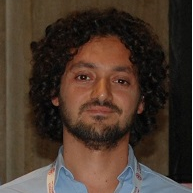Advances in Targeting Canonical and Non-canonical Nucleic Acids Structures
A special issue of Molecules (ISSN 1420-3049). This special issue belongs to the section "Medicinal Chemistry".
Deadline for manuscript submissions: closed (30 June 2022) | Viewed by 10133
Special Issue Editors
Interests: molecular modeling; computer-aided drug design; molecular dynamics; QM/MM; anticancer drugs
Interests: bioinorganic chemistry; computational chemistry; electron spectroscopy; host-guest binding; transition metal chemistry
Interests: molecular modeling and simulation; theoretical photophysics and photochemistry; time resolved spectroscopy; non-adiabatic phenomena; structural biophysics; DNA photosensitization; DNA lesions and repair mechanism; epigenetic regulations
Special Issues, Collections and Topics in MDPI journals
Special Issue Information
Dear Colleagues,
The maintenance of the nucleic acid structure is essential to assure the correct realization of their biological function. This includes duplication, transduction, the fine regulation of gene expression, and epigenetics. Hence, important studies dealing with the structure of isolated nucleic acids in different environments or of DNA interacting with proteins are actively performed and have allowed considerable advancements and the recognition of fine regulatory mechanisms, such as the role played by chromatin compaction in epigenetic regulations.
In addition, it is presently well recognized that under physiological conditions and in cellular environments, particular nucleic acid sequences can fold into biologically relevant “noncanonical” topologies. These peculiar structures can involve up to four nucleic acid strands, including, among others, hairpins, triplexes, G-quadruplexes, and i-motifs. Interestingly, these nucleic acid sequences are typically located within regions of the genome related to critical biological processes, such as gene regulatory sequences or telomeres, often involved in a number of human diseases, making them attractive molecular targets for drug design. Therefore, understanding the mechanistic details behind the stabilization of peculiar nucleic acid structural motifs, also due to their interaction with proteins and driving the formation of noncanonical conformations, along with their stabilization using small molecules/metal complexes, are of pivotal importance for future biomedical applications. In this regard, molecular modeling techniques (e.g., docking, extended molecular dynamics simulations, enhanced sampling methods, QM/MM calculations) are increasingly used to assist and partially rationalize experimental studies, providing the possibility to describe at the atomistic level the molecular recognition process and the structural evolution, including allosteric modulation, or to simulate important photophysical properties.
In this Special Issue, we invite the submission of short communications, original research articles, and reviews focusing on the biophysical determination and regulation of canonical and noncanonical nucleic acid/protein complexes, including, among others, histones or histon-like proteins, transcription factors, and repair and duplication enzymes. The interaction of small molecules/metal complexes with canonical/noncanonical nucleic acid structures, as well as the effect of DNA lesions on the molecular structure, will also constitute a particular focus of this issue. Moreover, research contributions combining molecular modeling along with experimental structural, photophysical, and molecular biology techniques (e.g., Cryo-EM, X-ray, UV-Vis spectroscopy, circular dichroism, FRET, fluorescence analyses, etc.) able to sinergically shed light into the drug/target binding mechanism are particularly welcomed.
Dr. Angelo Spinello
Dr. Antonio Monari
Prof. Dr. Giampaolo Barone
Guest Editors
Manuscript Submission Information
Manuscripts should be submitted online at www.mdpi.com by registering and logging in to this website. Once you are registered, click here to go to the submission form. Manuscripts can be submitted until the deadline. All submissions that pass pre-check are peer-reviewed. Accepted papers will be published continuously in the journal (as soon as accepted) and will be listed together on the special issue website. Research articles, review articles as well as short communications are invited. For planned papers, a title and short abstract (about 100 words) can be sent to the Editorial Office for announcement on this website.
Submitted manuscripts should not have been published previously, nor be under consideration for publication elsewhere (except conference proceedings papers). All manuscripts are thoroughly refereed through a single-blind peer-review process. A guide for authors and other relevant information for submission of manuscripts is available on the Instructions for Authors page. Molecules is an international peer-reviewed open access semimonthly journal published by MDPI.
Please visit the Instructions for Authors page before submitting a manuscript. The Article Processing Charge (APC) for publication in this open access journal is 2700 CHF (Swiss Francs). Submitted papers should be well formatted and use good English. Authors may use MDPI's English editing service prior to publication or during author revisions.
Keywords
- Noncanonical DNA/RNA structures
- DNA sensitization
- Molecular modeling
- Molecular recognition
- Anticancer drugs
- Nucleic acid/protein complexes








